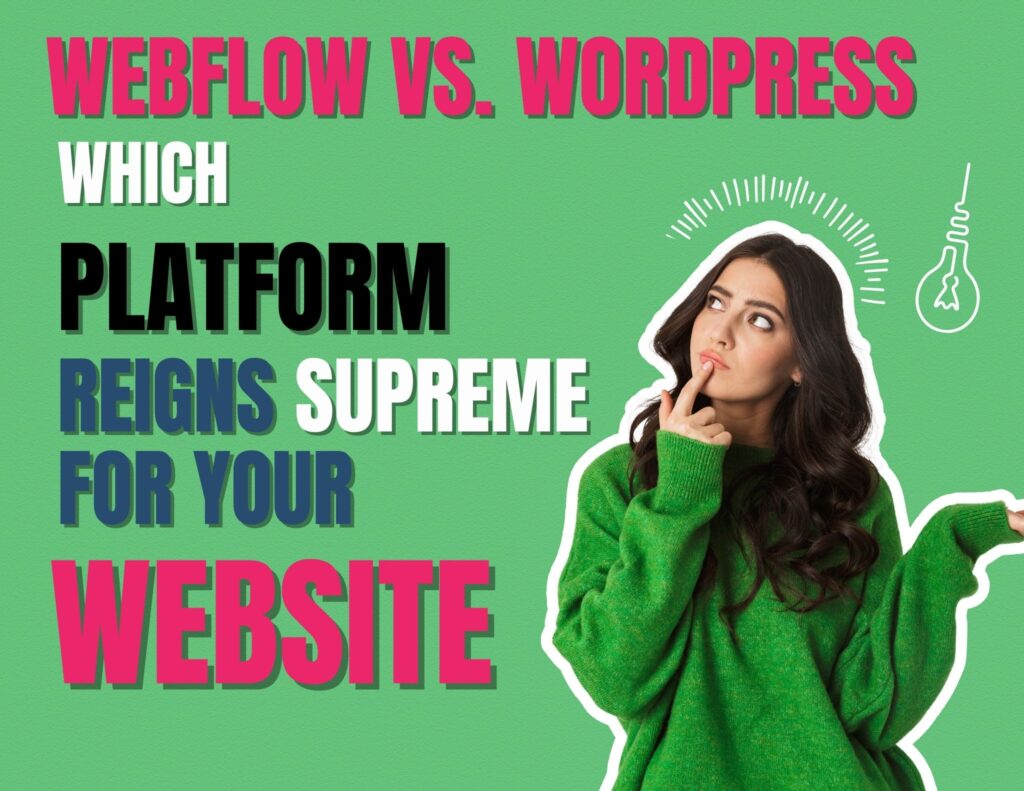Webflow vs. WordPress: Which Platform Reigns Supreme for Your Website?
Choosing the right platform for your website can feel like navigating a digital maze. Two popular contenders often top the list: WordPress and Webflow. While both empower you to build a web presence, they approach the task from distinctly different angles. Understanding these differences is crucial for selecting the platform that best aligns with your needs and goals. This article breaks down the core distinctions between Webflow and WordPress to help you make an informed decision.
The Core Difference: CMS vs. Visual Design Tool
At their heart, WordPress and Webflow serve different primary functions. WordPress is a traditional Content Management System (CMS). Its strength lies in content creation and management, offering a vast library of themes and plugins to extend its functionality. Webflow, on the other hand, is a visual website design tool. It empowers users to build websites directly on a visual canvas, without needing to write code. This approach grants designers unparalleled flexibility and control over the site’s aesthetics.
Design Approach: Themes vs. Visual Canvas
This fundamental difference in purpose translates into contrasting design approaches. WordPress relies heavily on pre-made themes. While these themes offer a starting point, customization often requires tweaking code or relying on plugins. Webflow provides a blank canvas. You design directly on the page, manipulating elements visually. This allows for pixel-perfect control and a truly unique design, but it can also require more design skill.
Coding Knowledge: Plugin Power vs. Visual Manipulation
WordPress can be used with minimal coding knowledge. The abundance of plugins and user-friendly interfaces makes it accessible to beginners. However, deeper customization often necessitates some coding skills. Webflow, while not requiring coding for basic design, allows for more granular control if you do possess coding abilities. The platform’s visual interface simplifies many tasks, but understanding HTML, CSS, and JavaScript can unlock even greater design possibilities.
Best Use Cases: Content vs. Aesthetics
WordPress shines when content is king. Its robust CMS features make it ideal for blog-heavy websites, online publications, and content-driven platforms. The sheer number of available plugins allows you to add virtually any functionality imaginable. Webflow, however, is the champion of design. It’s the perfect choice for projects where aesthetics are paramount. Designers, agencies, and businesses seeking a visually stunning and highly customized website often gravitate towards Webflow.
In a nutshell:
- WordPress: Best for content-focused sites, blogs, and users who prioritize a wide range of plugins and themes. Offers a gentler learning curve for non-coders but can become complex with advanced customization.
- Webflow: Best for projects where design is paramount, users want pixel-perfect control, and a visually impressive website is the primary goal. Offers more design flexibility but might require a steeper initial learning curve, especially for those new to visual design principles.
Ultimately, the best platform for you depends on your specific needs and priorities. Consider your content strategy, design requirements, technical skills, and budget before making your final decision. We can discuss this further with a zoom meeting. Contact us to schedule a zoom meeting.

